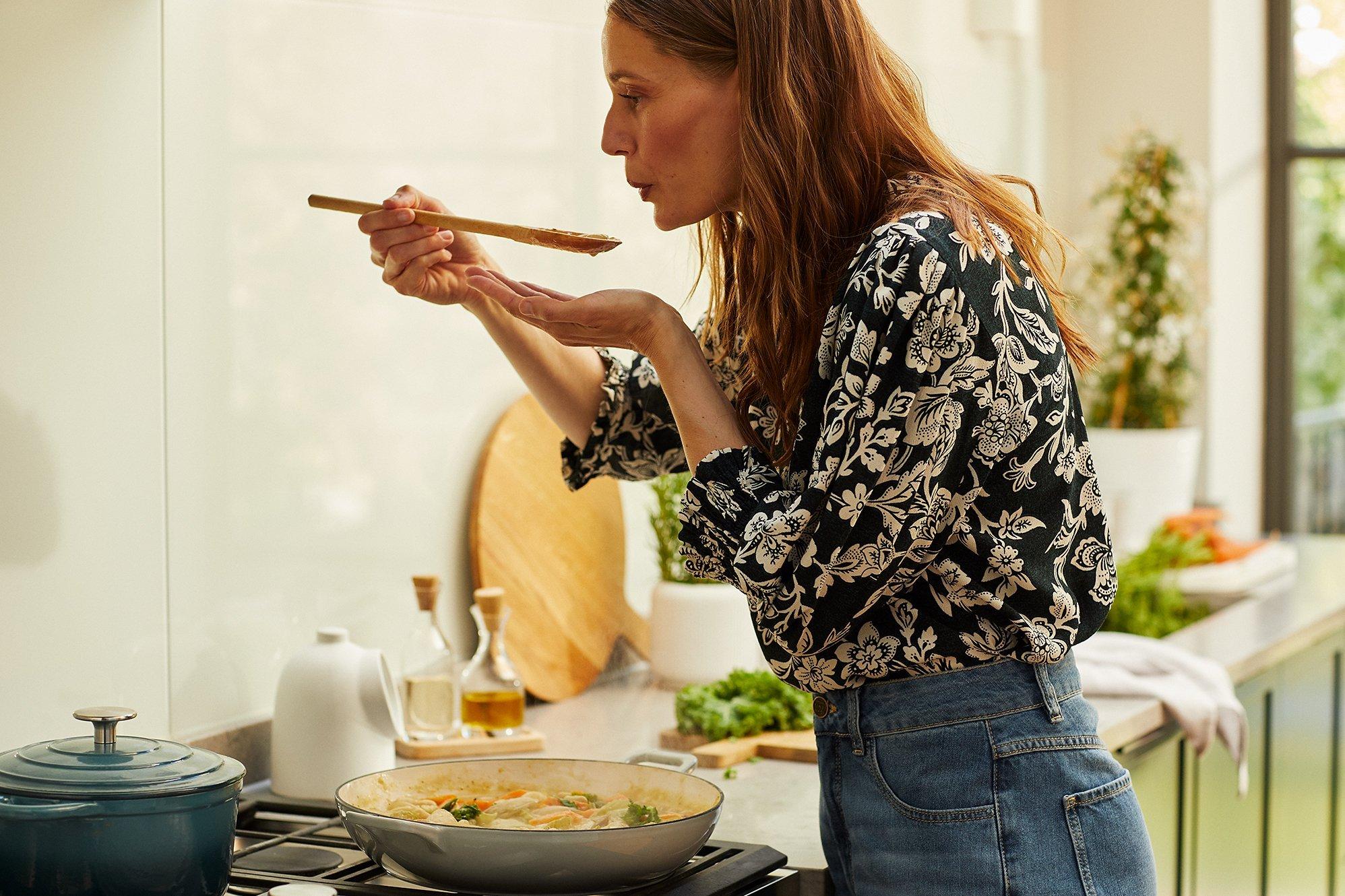7 realistic ways we can ALL reduce food waste
Want to save money and do your bit for the planet? Meet the experts’ most practical everyday tips
1. Unpack your cupboards
We’re all guilty of having those packets of rice and pulses at the back of the shelf. Do an inventory of what you have by unpacking your cupboards and thinking about what meals you can base around what’s there. You can also use it as an opportunity to rationalise your food cupboards by decanting half-empty packets of the same thing (pasta, lentils) into storage jars so you can easily see what you have and avoid over-buying in future.
2. Make more soup
Soup is the perfect solution for reducing food waste because you can use up veg that’s past its best and even the peel of roots like carrots. Whizz it up with a hand-held blender or invest in a soup maker – you throw in your leftover veg and peelings in throughout the day, then turn it on in the evening with some water and a stock cube so that it cooks and blends into soup.
3. Batch cook
A failsafe way to make sure that food doesn’t go off is to use it straight away in batch cooking. Freeze in different-sized portions to cater for eating alone at lunchtime or a family dinner. Batch cooking can also save on energy use – if you’re putting the oven on for an hour, you might as well get six or eight portions of food out of it.
4. Know the difference between ‘use by’ and ‘best before’
‘Use by’ is related to food safety whereas ‘best before’ is related to quality – and knowing the difference in more detail can have a huge impact on food waste. In the UK, we throw away 6.6 million tonnes of household food waste a year and almost three-quarters is food we could have eaten, according to the Waste Resources Action Programme (WRAP). As part of WRAP, Waitrose has removed best before dates from nearly 500 fresh food products in an effort to reduce food waste.
If something is past its best to be eaten fresh, get creative to use it up. Fruit that’s gone soft can be stirred into porridge or stewed for a crumble; mushy, brown bananas are perfect for banana bread; bendy carrots can go into soup; wilted spinach can be whizzed into a smoothie.
5. Think bento
If you end up with lots of small portions of leftovers that aren’t enough for a whole meal, try a bento box. Perfect for packed lunches for kids or adults, you can enjoy small portions of different foods in the divided sections.
6. Invest in a chest
If you have space that could house a chest freezer, it could be a worthwhile investment. Not only does it encourage some serious batch cooking, but it can also mean saving on frequent shopping deliveries.
7. Buy in bulk (and freeze)
Bigger portion/packet/pot sizes of certain foods can cost less but if you don’t think you’ll get through them, learn what you can and can’t freeze. Did you know that you can freeze semi-hard cheeses, such as cheddar and gouda? It’s best if you grate first then pop it into an airtight freezer bag for up to six months. You can also freeze yoghurt, cream and milk. Food should be frozen before midnight on the use by date, re-labelled and defrosted in the fridge.
You can even freeze eggs – for up to 12 months according to the US Department of Agriculture (USDA). Either beat yolks and whites together first or freeze them separately. Whites freeze well and can be beaten into meringue after thawing. Freezing yolks causes the yolk to become thick and syrupy so before you freeze them, mix four yolks with a pinch of salt and 1.5 teaspoons of sugar or corn syrup.
Fresh herbs are a common culprit for food waste because you can’t buy them in small quantities, so chop them and put them with water in an ice cube tray to freeze – then you can just pop the ice cubes into soup or casseroles for an instant flavour boost.





